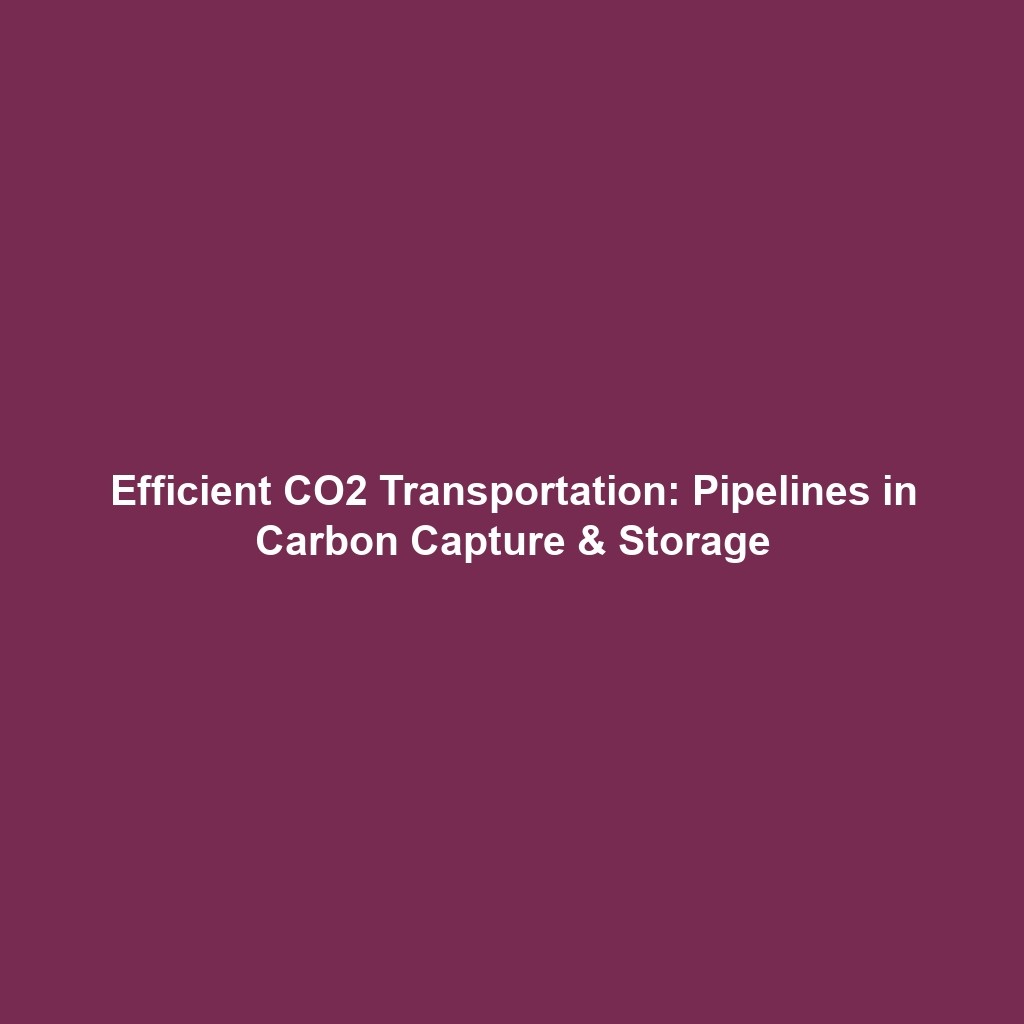The Three Key Steps in Carbon Capture & Storage (CCS)
Introduction
Carbon Capture & Storage (CCS) is an essential technology aimed at reducing greenhouse gas emissions and combating climate change. The process involves three key steps: capturing the CO₂, transporting it, and storing it underground or utilizing it for other purposes. This process is not only critical for industries with high carbon emissions but also plays a significant role in achieving global sustainability goals. As climate variations become more severe, understanding these key steps of CCS becomes increasingly crucial for both policy-makers and industries alike.
Key Concepts
The efficiency of Carbon Capture & Storage (CCS) is rooted in its three main components:
- CO₂ Capture: The first step involves extracting carbon dioxide from sources like power plants and industrial processes. There are several methods of capture, including pre-combustion, post-combustion, and oxy-fuel combustion.
- Transportation: Once captured, CO₂ is compressed and transported, typically through pipelines. This step ensures its safe transfer to storage sites or utilization locations.
- Storage or Utilization: Finally, CO₂ can be stored in geological formations underground, where it remains trapped, or used in various applications, such as enhanced oil recovery or as a feedstock for chemical production.
This structured approach not only serves to diminish atmospheric CO₂ but also aligns with broader sustainability and environmental protection initiatives.
Applications and Real-World Uses
Understanding how the process involves three key steps: capturing the CO₂, transporting it, and storing it underground or using it for other purposes is vital within the field of Carbon Capture & Storage (CCS). Some of the significant real-world applications include:
- Enhanced Oil Recovery (EOR): Captured CO₂ is injected into oil reservoirs to increase production while simultaneously storing the gas.
- Geological Storage: Captured CO₂ is securely stored in deep saline aquifers or depleted oil and gas fields, ensuring long-term sequestration.
- Utilization in Chemical Manufacturing: CO₂ is repurposed in the production of chemicals, fuels, or materials such as plastics, showcasing its versatility.
Current Challenges
Despite its potential, the process faces several challenges within the realm of Carbon Capture & Storage (CCS), including:
- High costs associated with technology implementation and infrastructure development.
- Technical limitations in capturing low concentrations of CO₂.
- Regulatory and policy uncertainty regarding storage sites.
- Public perception and awareness concerning the safety of underground storage.
Future Research and Innovations
Future innovations related to the process involves three key steps: capturing the CO₂, transporting it, and storing it underground or using it for other purposes focus on enhancing efficiency and reducing costs. Some promising developments include:
- Advancements in materials for CO₂ capture to improve cost-effectiveness.
- Research into novel methods of CO₂ utilization, such as turning it into building materials.
- Increased use of renewable energy sources to power capture and transport processes, further lowering emissions.
Conclusion
In conclusion, understanding the three key steps: capturing the CO₂, transporting it, and storing it underground or using it for other purposes is fundamental to advancing Carbon Capture & Storage (CCS) technologies. As we strive to implement more sustainable practices, the role of CCS will be pivotal in addressing climate change challenges. For continual updates on the latest CCS advancements, visit our related topics page, and stay informed about innovations in carbon management.

